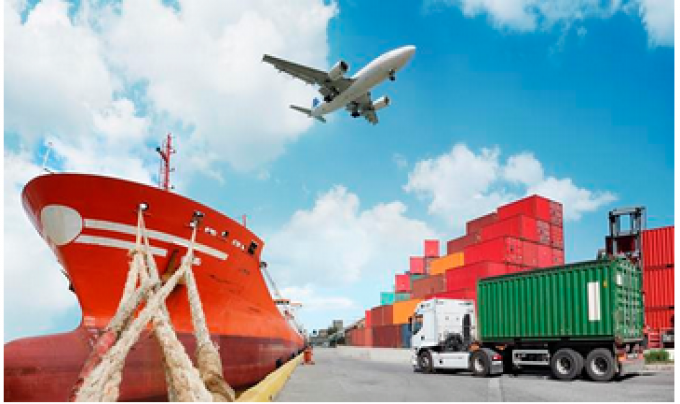'Doomsday scenario' for forwarders just a post-Covid rate drop blip
The “disappointing results” in Transport Intelligence’s (Ti) Global Freight Forwarding Market Report are a consequence of ...
TFII: SOLID AS USUALMAERSK: WEAKENINGF: FALLING OFF A CLIFFAAPL: 'BOTTLENECK IN MAINLAND CHINA'AAPL: CHINA TRENDSDHL: GROWTH CAPEXR: ANOTHER SOLID DELIVERYMFT: HERE COMES THE FALLDSV: LOOK AT SCHENKER PERFORMANCEUPS: A WAVE OF DOWNGRADES DSV: BARGAIN BINKNX: EARNINGS OUTODFL: RISING AND FALLING AND THEN RISING
TFII: SOLID AS USUALMAERSK: WEAKENINGF: FALLING OFF A CLIFFAAPL: 'BOTTLENECK IN MAINLAND CHINA'AAPL: CHINA TRENDSDHL: GROWTH CAPEXR: ANOTHER SOLID DELIVERYMFT: HERE COMES THE FALLDSV: LOOK AT SCHENKER PERFORMANCEUPS: A WAVE OF DOWNGRADES DSV: BARGAIN BINKNX: EARNINGS OUTODFL: RISING AND FALLING AND THEN RISING

Air and sea freight forwarders, hauliers, 3PLs and players in the express and parcels market are all experiencing pressure on margins, according to a recent white paper published by research consultancy Transport Intelligence (Ti).
Growing Margin Pressures: What’s the Cause? targeted air and sea freight forwarders and sought to gain an understanding of the current state of the market – the vast majority of respondents (89.9%) reported growing margin pressure.
The survey found that, excluding the effects of volume and rate fluctuations, 61.8% of freight forwarders believe pressure on margins will worsen over the next 12 months, due to rising competition and stronger negotiation by clients.
Overall, the increasingly competitive landscape in the forwarding industry is likely to challenge forwarders’ traditional bargaining power with shippers, says the paper, forcing them to operate on thin margins.
The pessimistic forecasts for growing margin pressure could also be explained by the threat of the removal of freight forwarders from the relationship between shippers and carriers, it adds.
The paper’s co-author, Viki Keckarovska, told The Loadstar: “We are discussing gross profit margin, the difference between forwarding revenue from customers and the cost paid to carriers.
“Overall, there is a clear negative relationship between carrier rate growth and changes in forwarders’ gross profit margins that has held for at least the past decade. As rates fall, forwarder gross profit margins increase, which applies for both air and sea freight, though the relationship is clearer for sea.
“So, when air and ocean carrier rates fall, forwarder buy-rates from carriers also decline rapidly. However, forwarder sell-rates to their customers do not fall as quickly, mainly because of contract structures, so gross profit margins go up. Basically, gross profit margins increase in times of falling rates because forwarders do not pass on the lower rates to their customers immediately. But any gain in profit margins will be transitory, because lower rates will eventually be passed on to customers.
On how margins currently compare with pre-pandemic levels, Ms Keckarovska said: “DSV, Kuehne + Nagel and Expeditors are typically at the upper end when it comes to profitability and maintain margins above the average. In 2022, DSV and K+N had the highest margins. Compared with pre-pandemic levels, margins have increased by around two percentage points for air and sea freight forwarding.
“However, the era of booming freight forwarder profits, in 2022, has ended, with several of the major forwarders, including K+N and DSV, reporting profits in the first and second quarter of 2023 fell back in the face of rapidly declining volumes of freight.”
She added: “There is a considerable range in the profitability of forwarders. Some achieve operating profit margins of around 10%, whereas at the other end of the scale, a number operate at margins of between 2% and 4%. And, yes, margin pressure will be a particular issue for small and medium-sized forwarders.
“But there are other things to consider. For instance: management and staff, freight forwarding relies heavily on the ability of staff to buy and sell effectively; buying power, a forwarder with large volumes can buy better rates from a shipping line/airline and can either benefit from the lower rates by not passing them on fully to shippers, or use these lower rates to increase market share by operating at lower margins – hence, the margin pressure will be greater for small and medium sized forwarders; overheads, some companies will be better at operating with lower overheads than others, including offices and IT; and tradelane exposure, forwarders that operate on the main tradelanes face heavy competition, while those that have built up a customer base on more niche lanes, or provide certain speciality services or knowledge, can charge a premium.”
The full report, Growing Margin Pressure: What’s the Cause? can be read here.
Comment on this article